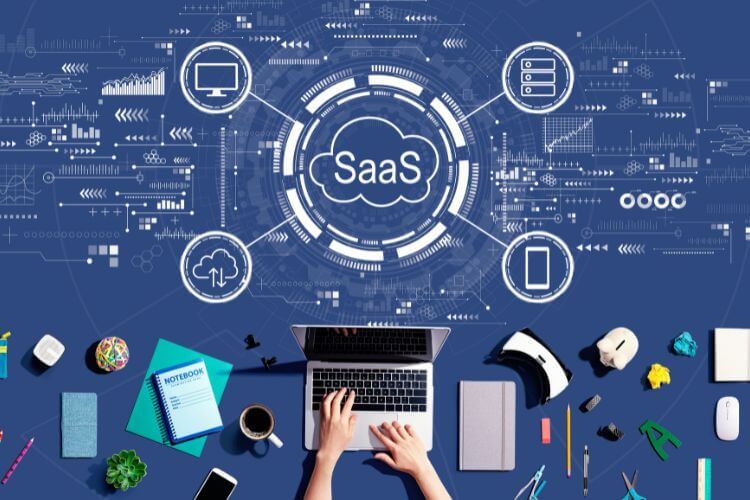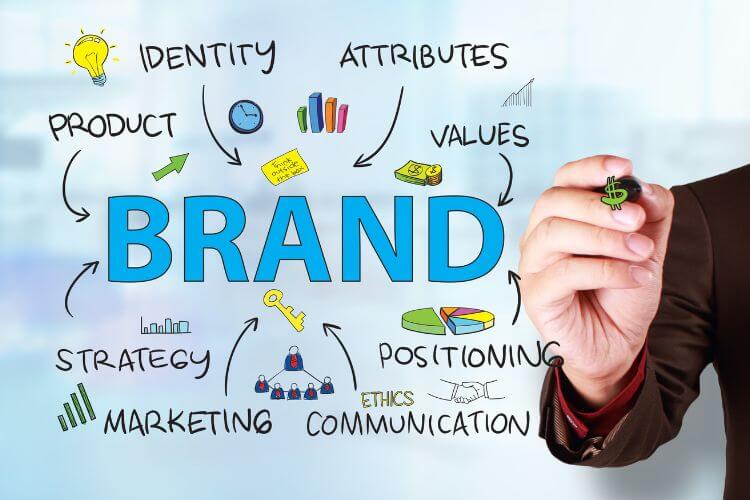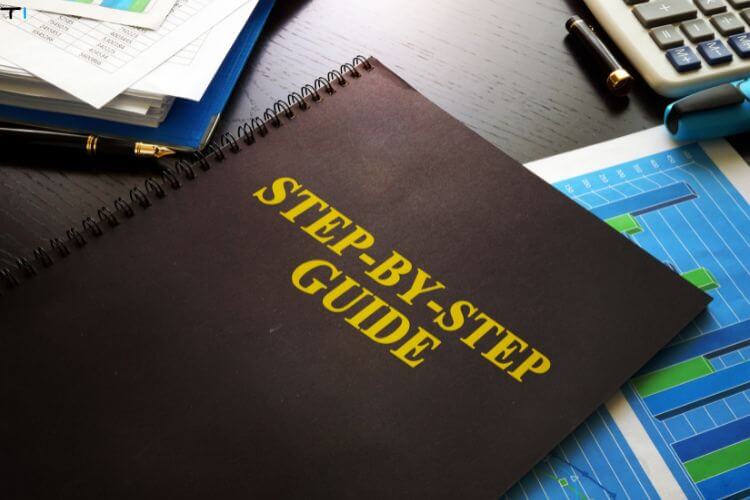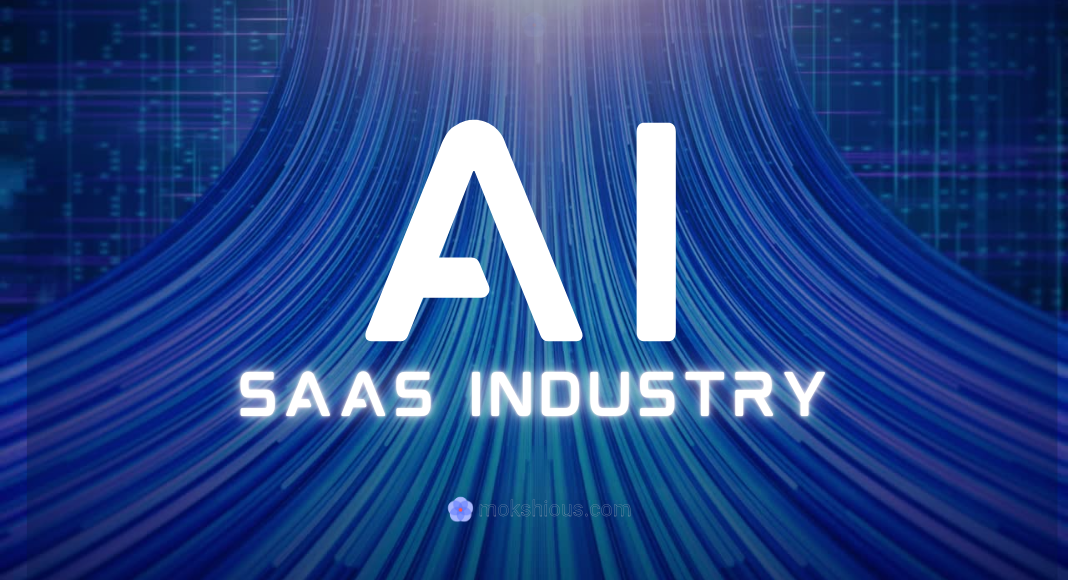According to a recent study by Deloitte, over 80% of organizations plan to accelerate their AI investments in the next two years, with software-as-a-service (SaaS) platforms taking center stage. This shift means there’s plenty of opportunity to differentiate in the market, but only for those that harness the AI and saas synergy effectively.
Introduction
It’s all about creating something extraordinary. Be it a thriving startup or handling established saas companies, it is the way to build a strong AI-powered identity that is the linchpin of modern success. In a world where product development must keep pace with rapidly evolving AI technology, your brand can’t just be a logo; it must connect with your target audience on a deeper level.
- By adopting a saas solution that addresses real use cases, you elevate customer acquisition and secure your spot among b2b innovators.
- To create an appealing brand identity, you need clarity on brand elements; those intangible qualities that set you apart.
Pro Tip: A single tip many leaders overlook? Harmonize your messaging with tangible AI capabilities. This approach helps your saas product resonate in a marketplace clamoring for personalization and efficiency.
Understanding the AI and SaaS Landscape in 2025

Why AI + SaaS Is Transformative
On average, On average, 71 out of every 100 executives rely on AI for decision-making, with 52 of them stating it influences their competitive positioning. Additionally, 47 out of 100 executives report that AI is creating new revenue opportunities, reinforcing its strategic significance. This intersection of AI and saas offers real-time data analytics, predictive modeling, and frictionless user experiences. By weaving AI models into your saas software, you can optimize workflows, enhance decision-making, and delight customers’ expectations for innovation.
- Embracing generative AI for rapid content creation or trend forecasting.
- Leveraging AWS or similar cloud providers to stay scalable.
Key Market Drivers & Trends
Growth in VC-backed AI investments rose by nearly 57% last year, with businesses and individuals demanding integrated solutions that yield immediate ROI. Startup founders sense these shifts, generating new saas ideas that can stand out.
- AI-Powered Customization: From chatbots to recommendation engines, personalization is the magnet for attracting new customers.
- Real-Time Insights: Data-driven insights that deliver actionable recommendations, boosting overall business growth.
- Saas program Innovations: Hybrid or specialized solutions to meet increasingly complex corporate needs.
How SaaS Businesses Can Evolve
To refine or position your brand, you must focus on building meaningful experiences. Whether you need to embed AI features or devise fresh marketing strategies, continuous innovation is essential.
- Differentiate effectively by offering a saas solution that addresses pain points faster than legacy alternatives.
- Understand how to build robust AI modules: Evaluate your tech stack, pilot small features, and scale after proven success.
- Make sure you learn how to build trust through transparent usage of data and user analytics.
Strategy for Establishing a Strong SaaS Brand Identity

Defining Your Unique Value Proposition
Define your unique value proposition with razor-sharp specificity. If you’re establishing a strong saas brand, articulate how you serve your niche better than the next competitor. This is where you communicate your brand’s unique value proposition; the foundation that draws in stakeholders.
- Research the market thoroughly to see which challenges remain unsolved.
- Identify potential synergy between your AI module and the real-world demands of software solutions.
Crafting an Appealing Brand Identity
Studies show that 35% of consumers pay more for services from brands they trust. This underscores the need for an appealing brand identity that merges emotional resonance with visual flair.
- Employ a strong visual identity: Incorporate consistent color schemes, typography, and branding materials across channels.
- Enhance website design to emphasize your AI-powered benefits and show how users can access your features in a way that varies based on their specific needs.
Remember: Position your brand to spotlight how you integrate cutting-edge AI. It reflects not just your product’s strength but also your entire ethos.
Emotional Connections & Brand Story
Humans connect to stories more than they connect to facts. A compelling brand story can illuminate your mission and values.
- Feature behind-the-scenes narratives of your building an AI saas journey or highlight how you overcame early hurdles in software development.
- Maintain a feedback loop with customer feedback and user feedback to refine messaging, ensuring each pivot resonates with your saas app’s user base.
Consistent Branding Across Channels
Consistent branding builds recognition, while erratic branding confuses people and undermines credibility. Adopt uniform messaging on social platforms, newsletters, and user interfaces to build trust over time.
- Track key metrics like net promoter score and conversion rates to gauge brand health.
- For a successful saas enterprise, unify your product interface, marketing emails, and social campaigns.
Building an AI SaaS Product: The Development Roadmap

Planning & Researching the Market
Roadmap creation starts with aligning your saas project to your business goals. Identify where your saas solution or existing products best intersect with the market’s unmet demands.
- Understand the value your solution brings: This perspective shapes everything, from product features to your overall brand identity.
- A thorough market scan helps you make informed decisions around feature sets and future expansions.
Assembling the Right Tech Stack
Choose frameworks and providers that simplify the integration of AI technology. While AWS remains a popular choice, weigh other providers to see what suits your performance and security needs.
- Opt for agile-friendly languages that favor saas developers working iteratively.
- Look for specialized development services if you require advanced AI pipeline building or mobile app development to complement web-based platforms.
A robust tech stack ensures swift iteration cycles, letting you adapt to the marketplace swiftly.
Software Development & Iterative Improvements
Modern software development thrives on agility. If you adopt a staged approach, you can test features, gather data, and implement updates and improvements based on actual usage.
- Integrate microservices architecture to break down your saas software into manageable chunks.
- Remember, future expansions or new modules should mesh seamlessly with your core application.
Ensuring a Stellar User Experience
A well-known Forrester survey shows that a good user experience can increase conversion rates by up to 400%.
- Use AI to analyze behavioral patterns and adapt the interface accordingly.
- Provide guided onboarding, ensuring that using the product feels intuitive; crucial for driving higher retention in your user base.
Using AI to Scale Your SaaS Business
Leveraging Generative AI for SaaS Growth
Generative ai can spark greater automation, from producing dynamic reports to drafting personalized recommendations. By implementing these algorithms, you evolve into a forward-thinking saas business that leads in your domain.
- Combine textual generation for marketing content with robust data analytics for deeper product insights.
- Align these innovations with your content marketing and brand messaging.
Integrating AI Models & Features Seamlessly
Smoothly integrating AI is all about synergy. Don’t bolt it on; embed it so that everything from login screens to in-app dashboards uses AI features fluidly.
- Offer targeted product suggestions or personalized alerts for better engagement.
- Keep the user journey frictionless so the addition of AI feels like a natural extension, not a forced novelty.
Building Trust Through AI-Driven Personalization
You show real attentiveness to the needs of the end-user by personalizing your user experience. This approach fosters loyalty and helps with retention and new leads.
- Show transparency: Clarify how your AI-powered software as a service collects and processes data.
- This authenticity will help you grow organically, setting you apart from more generic solutions.
Recommended from Medium: Stories to Help You Differentiate
Real-World Success Stories
In various recommended from medium articles, you’ll find companies that overcame slow adoption by aligning AI solutions with pressing market needs.
- For instance, some saas brands discovered success by introducing hyper-targeted chatbots for onboarding.
- By detailing their pivot points, you see how quickly fortunes can change when the brand invests in user-centric improvements.
- E-commerce Vahdam Teas, an e-commerce company in India, experienced a 200% growth rate through AI-driven personalized product recommendations and marketing campaigns based on customer preferences. An e-commerce brand specializing in fashion and lifestyle products also used AI to generate personalized product descriptions based on customer preferences, browsing history, and purchasing behavior.
How companies like Amazon, Netflix, and Siemens leveraged AI to drive efficiency and customer engagement. It’s a great resource for understanding how AI solutions can align with market needs and deliver measurable results.
Read how SaaS companies like HubSpot, Slack, and Salesforce integrated AI to enhance customer experiences and streamline operations. It’s perfect for showcasing how hyper-targeted solutions can drive success.
This story explores how vertical AI agents are reshaping industries by combining software and human workflows. It’s ideal for illustrating how innovative AI solutions can address pressing market needs.
Lessons Learned for SaaS Startups
Stories to help your emerging company often emphasizes the importance of user buy-in. If you design features without listening to real customers, brand loyalty might be impossible to sustain.
- Keep a close watch on the customer feedback cycle from day one.
- Successful saas campaigns revolve around iterative design and validated learnings.
Step-by-Step Guide – Laying the Foundation for an AI SaaS Brand

Here’s a quick tour of getting started on how to create an AI saas brand that your audience cares about. Every step guides you in real practice that develops the right identity, from concept planning to target execution.
Step 1: Identify Your Core Market Gap
The first step to building a strong identity in AI SaaS is pinpointing the precise gaps you aim to fill. Start by conducting a thorough review of your target industry or saas business niche. This involves analyzing existing competitors and saas ideas to understand what they offer; and then spotting where they fall short. Look at forums, social media groups, and customer feedback from rival solutions to discover recurring pain points. You might realize users want faster AI-powered analytics or a simpler interface for complex tasks. Once you’ve uncovered these gaps, validate them by gathering data or user surveys. Remember, it’s not just about being different; it’s about delivering true value that resonates.
Make sure your chosen gap aligns with your internal expertise and business goals. If your team excels in software development for advanced machine learning, emphasize those skills. This laser focus helps you stand out in a saturated marketplace because you’re not just copying existing features; you’re offering something unique that truly meets a pressing need.
Step 2: Refine Your Value Proposition and Differentiators
After identifying your core market gap, the next crucial move is refining your brand’s unique value proposition. A compelling value proposition articulates the exact benefits your saas solution delivers, making it clear why potential customers should choose you over established saas companies. Ask yourself: What specific problem does your solution solve? How do you leverage AI models to create a strong visual identity or improve the user experience? By systematically answering these questions, you isolate your key differentiators; whether it’s AI features that reduce response times or a simplified onboarding process that appeals to novice users in the b2b saas arena.
Once you’ve shaped these differentiators, incorporate them into your content marketing, website design, and branding materials to ensure a consistent branding approach. Keep revisiting your proposition as you gather user feedback and real-time analytics. This iterative process ensures you remain relevant, especially as competitors evolve. Ultimately, a concise, impactful value proposition becomes your rallying cry, boosting both customer acquisition and business growth through clear messaging that resonates with the audience you serve.
Frequently Asked Questions (FAQ)
In this frequently asked questions section, we address pressing inquiries about building a saas with AI capabilities:
What is AI SaaS, and how does it differ from a traditional SaaS model?
AI SaaS integrates artificial intelligence algorithms (e.g., machine learning, predictive analytics) directly into the SaaS platform. Unlike regular SaaS solutions, it offers adaptive and data-driven features that learn from user interactions in real time, enabling faster insights and more personalized experiences.
How important is a brand identity for an AI SaaS startup?
In a crowded marketplace, a clear and compelling brand identity helps you stand out, attract early adopters, and instill confidence in prospective clients. It demonstrates professionalism, reliability, and a unique value proposition tied to your AI offering.
What are some cost-effective ways to incorporate AI into my SaaS product’s brand strategy?
Start small; integrate AI-driven chatbots or recommendation engines that solve immediate user pain points. You can also leverage open-source libraries or third-party AI platforms (e.g., AWS) for quick deployment, minimizing upfront infrastructure expenses.
How do I build trust with potential customers if I’m new to the AI SaaS market?
Focus on transparency and social proof. Share case studies, pilot program results, and user testimonials. Offer free trials or demos that let prospective users experience your AI-driven features firsthand, showcasing tangible value early on.
Which metrics should I monitor to track brand success in the AI SaaS space?
Keep tabs on Net Promoter Score (NPS), customer churn rate, retention rates, user engagement, and how frequently AI features are utilized. These metrics collectively highlight brand loyalty and the perceived usefulness of your AI product.
How can I maintain a consistent brand identity across multiple channels and touchpoints?
Document a brand style guide outlining visual elements, tone of voice, and messaging pillars. Implement these guidelines in website design, social media, emails, in-app experiences, and customer support interactions to ensure uniformity.
Is it better to focus on a niche AI SaaS use case or aim for broader market coverage?
Narrow targeting typically yields quicker traction because you solve specific pain points for a defined audience. Once you establish credibility, you can scale or broaden your offerings to a larger user base.
How frequently should I update AI features in my SaaS product to stay competitive?
It depends on user feedback and evolving trends. As a rule of thumb, adopt an iterative cycle; release smaller updates more frequently to maintain relevance and refine algorithms rather than making sporadic, large-scale overhauls.
What role does data privacy play in building an AI SaaS brand?
Data privacy is paramount. Compliance with regulations (GDPR, CCPA) and transparent data handling builds trust. A poor reputation for data misuse or security lapses can damage even the most innovative AI-driven brand.
How do I align my marketing strategies with product development to create a cohesive AI SaaS brand?
Encourage collaboration between marketing and product teams early in the development process. Marketing can highlight user pain points that AI solutions should address, while product teams tailor features to meet those needs; ensuring consistent messaging and a unified brand story.
Conclusion: Start Building Your Successful SaaS Brand in 2025
Building a strong brand demands creativity, precision, and a keen eye for AI-powered opportunities. Whether you’re refining a saas product or launching something entirely fresh, champion the value of it’s about creating genuine connections.
- By start building a cohesive approach; spanning from your development roadmap to your marketing funnel, your brand will shine in the race toward 2025.
- Encourage cross-department collaboration, from product teams to your b2b saas marketing unit, ensuring alignment at every juncture.
A consistent, innovation-driven mindset will help you define your unique value proposition, align with business goals, and conquer new frontiers in the AI domain. It also ensures you help you develop synergy between AI potential and brand authenticity, fueling a successful saas strategy.
